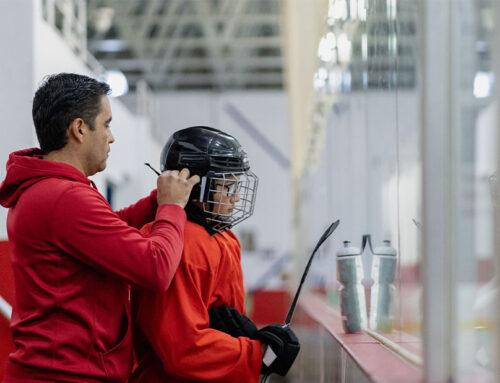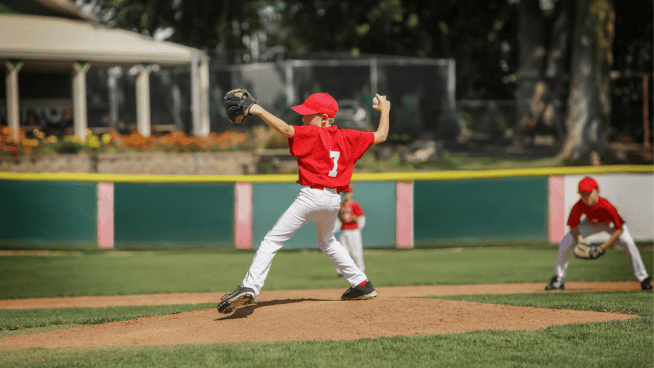Task-Oriented vs. Goal-Oriented: Which is the Better Approach to Athlete Training?
Motivation plays a key role in determining an athlete’s success, and it’s also a fundamental part of exercise and sport psychology. Having an understanding of what drives personal goals improves how, and why, athletes train the way they do.
Athletes fall into one of two camps when it comes to setting personal training goals. Some are motivated by the task itself, and others find motivation in achieving goals. Task orientation versus goal orientation is a contentious issue in the field of exercise and sports psychology. But knowing which camp you fit into can help you get more from your training program.
There’s plenty of conflicting research on what motivates athletes. Some studies suggest that goal orientation is better, because an athlete is more likely to be successful. Other research suggests that task orientation makes for happier athletes, who train harder and are generally better prepared.
This often leads to differences of opinion between coaches and athletes. Many coaches prefer a goal-oriented approach because it can be measured, and that’s helpful in keeping an athlete on track with his or her training program.
Athletes tend to prefer the task-oriented approach, because they can focus on one small part of training at a time. This reduces pressure on the athlete and makes training more enjoyable.
So, which is the better approach to training?
Athletes need to enjoy their training. They should want to work hard and push themselves to get the most out of their workouts. Highly motivated athletes train because they want to, not because they have to. The rewards for an athlete have to come from within, and enjoyment is the greatest motivation tool. A happy athlete is a committed athlete.
On the other hand, coaches want to see results. A coach needs to know how, and when, to adapt and change a program. The ability to measure an athlete’s progress in training is important. Having goals clearly set is the primary aim for most coaches. Everything that guides them in their role is goal-oriented.
A balanced approach with clear communication is best. Athletes need to be given room to choose some of their tasks, ones they feel will benefit them in training. Coaches should allow the athletes to feed directly into their training programs. This introduces a fun element into the training.
Clear communication is most important. Both the coach and the athlete enter into a relationship with a common goal. There needs to be an understanding of what is needed and how it can be achieved. A good coach provides the motivation that will help athletes perform at their best. A good athlete is someone who is empowered enough to want to train, even when there is little or no extrinsic reward.
In summary, good coaches will help athletes achieve because they want to achieve—and because they enjoy what they do. Good athletes will work with their coaches to make sure they reach their potential. It’s all about finding a balance.
RECOMMENDED FOR YOU
MOST POPULAR
Task-Oriented vs. Goal-Oriented: Which is the Better Approach to Athlete Training?
Motivation plays a key role in determining an athlete’s success, and it’s also a fundamental part of exercise and sport psychology. Having an understanding of what drives personal goals improves how, and why, athletes train the way they do.
Athletes fall into one of two camps when it comes to setting personal training goals. Some are motivated by the task itself, and others find motivation in achieving goals. Task orientation versus goal orientation is a contentious issue in the field of exercise and sports psychology. But knowing which camp you fit into can help you get more from your training program.
There’s plenty of conflicting research on what motivates athletes. Some studies suggest that goal orientation is better, because an athlete is more likely to be successful. Other research suggests that task orientation makes for happier athletes, who train harder and are generally better prepared.
This often leads to differences of opinion between coaches and athletes. Many coaches prefer a goal-oriented approach because it can be measured, and that’s helpful in keeping an athlete on track with his or her training program.
Athletes tend to prefer the task-oriented approach, because they can focus on one small part of training at a time. This reduces pressure on the athlete and makes training more enjoyable.
So, which is the better approach to training?
Athletes need to enjoy their training. They should want to work hard and push themselves to get the most out of their workouts. Highly motivated athletes train because they want to, not because they have to. The rewards for an athlete have to come from within, and enjoyment is the greatest motivation tool. A happy athlete is a committed athlete.
On the other hand, coaches want to see results. A coach needs to know how, and when, to adapt and change a program. The ability to measure an athlete’s progress in training is important. Having goals clearly set is the primary aim for most coaches. Everything that guides them in their role is goal-oriented.
A balanced approach with clear communication is best. Athletes need to be given room to choose some of their tasks, ones they feel will benefit them in training. Coaches should allow the athletes to feed directly into their training programs. This introduces a fun element into the training.
Clear communication is most important. Both the coach and the athlete enter into a relationship with a common goal. There needs to be an understanding of what is needed and how it can be achieved. A good coach provides the motivation that will help athletes perform at their best. A good athlete is someone who is empowered enough to want to train, even when there is little or no extrinsic reward.
In summary, good coaches will help athletes achieve because they want to achieve—and because they enjoy what they do. Good athletes will work with their coaches to make sure they reach their potential. It’s all about finding a balance.











